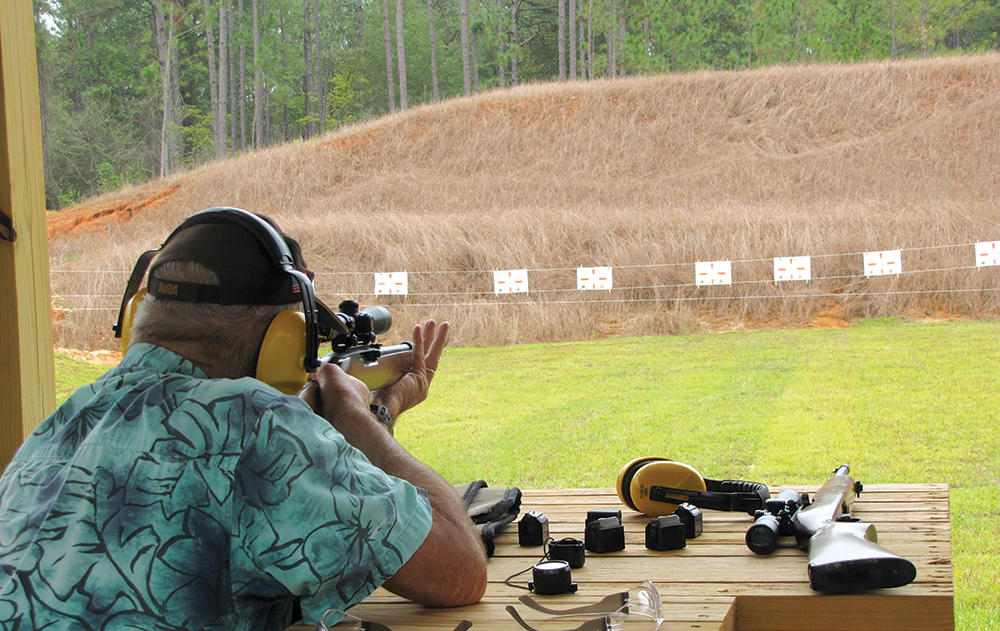
All Alabama fishing and hunting licenses expire on Aug. 31 each year, but where does all that money go?
In 1937, President Franklin Roosevelt signed the Federal Aid in Wildlife Restoration Act, known as the Pittman-Robertson Act. The act placed excise taxes on the sale of firearms, ammunition and other products used for hunting, with proceeds to be distributed to states for wildlife restoration.
A similar law, the Federal Aid in Sport Fish Restoration Act of 1950, does the same thing for fishing products. And in 1984, Congress passed the Sport Fish Restoration & Boating Trust Fund to raise money for recreational boating.
“When Pittman-Robertson passed, legislators understood the importance of the hunting heritage and having wildlife in the country,” says Chuck Sykes, director of the Alabama Wildlife & Freshwater Fisheries Division. “Whenever anyone bought a gun or ammunition, the manufacturer paid a portion of that money into a trust fund administered by the U.S. Fish and Wildlife Service to promote healthy wildlife populations.”
By the 1930s, decades of habitat destruction, land clearing and market hunting seriously depleted many wildlife populations. In 1900, fewer than 500,000 whitetail deer remained in the lower 48 states. Just 50 years ago, seeing a deer track in the woods almost made the news in many areas. Now, many states hold more than a million deer.
The federal government collects these excise taxes and returns money to each state, based upon its landmass and the total number of hunting and fishing licenses sold in that state. The more hunting and fishing licenses that a state sells, the more money comes back to the sportsmen of that state.
“It’s a three-to-one match,” Sykes says. “For every $1 we collect in license sales, Alabama receives $3 from the federal government.” States must spend money on an approved project, and the federal government reimburses the state 75 percent of that cost. “For instance, we if wanted to build a $1 million boat launching facility, Alabama must come up with the first $250,000.”
With this money, state conservation departments buy lands used for public hunting, fishing, hiking, camping, horseback riding, bicycling and other activities. States can also build boat launches, canoe and hiking trails and public shooting ranges as well as fund many other activities to promote outdoors recreation.
In Alabama, this money funds the Conservation Department, among other things. However, federal money cannot go to law enforcement. Therefore, the state must spend 66 percent of the money collected from license sales to fund conservation enforcement.
“The Alabama Department of Conservation and Natural Resources, with the exception of the state parks, receives NO tax dollars,” Sykes says. “We survive off of hunting and fishing license sales and federal monies attached to them.”
Non-resident hunting and fishing license sales also figure into the equation. Alabama sells more than 30,000 annual non-resident fishing licenses and another 25,000 short-term “trip” licenses each year. Hunters from other states buy about 12,000 licenses per year. Non-resident license sales generate more money for conservation efforts because they cost more. In addition, visiting sportsmen pay for lodging, fuel, supplies, food and other expenses during their visit, contributing more to the state economy.
“Hunters and fishermen are bearing the burden for everyone, not just in Alabama, but all across the country,” Sykes says. “People who don’t hunt or fish, but enjoy hiking, bird watching, canoeing or otherwise enjoying public land are not contributing to the upkeep and maintenance of that property or future purchases of public land unless they buy a license.”
That’s where the Alabama Wildlife Heritage License comes in. This license was designed for people who don’t hunt or fish, but who do want to contribute to the system and continue enjoying recreation on public lands. It’s an easy, affordable way to help conserve Alabama’s natural resources for future generations.
The license is $10.85 annually, or $220.25 for a lifetime license.
In Alabama, outdoors enthusiasts can visit more than 1.3 million acres of wildlife management areas and other public lands with habitats ranging from tidal marshes to mountains. Wildlife heritage license sales also qualify for federal reimbursement, so one person’s contribution actually goes much farther for the state’s conservation efforts.
For more information on buying wildlife heritage licenses, call 888-848-6887, or see www.outdooralabama.com/sites/default/files/licenses/WHLBrochure.pdf.
Previous generations passed a magnificent wild legacy to us. Now, it’s our turn to ensure the next generation enjoys the same experiences. The 2016-17 licenses should go on sale in late August wherever people buy sporting equipment. People can also buy licenses online. See www.outdooralabama.com/alabama-license-information.
John N. Felsher is a freelance writer and photographer who writes from Semmes, Ala. Contact him through his website at www.JohnNFelsher.com.





